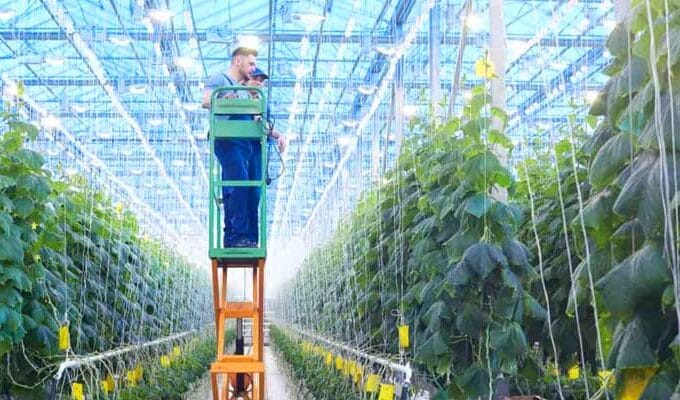The advent of software-defined vehicles (SDVs) represents a transformative leap in automotive technology. Among the most compelling advancements in this domain is the concept of flexible vehicle networks, which are systems designed to enable SDVs to communicate and collaborate seamlessly. These networks are pivotal for optimizing traffic flow, enhancing safety, improving efficiency, and redefining urban mobility. Flexible vehicle networks leverage advanced communication protocols, artificial intelligence (AI), and dynamic decision-making algorithms to create a synchronized ecosystem of autonomous transportation.
The Foundation of Flexible Vehicle Networks
Flexible vehicle networks in SDVs rely on a combination of vehicle-to-everything (V2X) communication technologies. These include vehicle-to-vehicle (V2V), vehicle-to-infrastructure (V2I), vehicle-to-cloud (V2C), and vehicle-to-pedestrian (V2P) communications. V2X technologies allow SDVs to share critical information such as real-time traffic data, road conditions, and vehicle behavior with other connected entities.
Central to these networks is the ability to adapt dynamically to changing environments. Unlike static transportation systems, flexible networks use AI-powered algorithms to analyze vast amounts of data and make instant decisions. This adaptability ensures that SDVs can respond to unforeseen circumstances, such as accidents, road closures, or sudden weather changes, while maintaining optimal performance.
In building flexible vehicle networks into their new car lines, manufacturers are embracing automotive ethernet to make it happen. Leading automotive software providers enable vehicle electrical and electronics engineers to centrally manage in-vehicle automotive ethernet networks so they can monitor, configure, and troubleshoot issues at any time, including post-production.
Major Components
- Communication Protocols: Flexible vehicle networks depend on standardized communication protocols to ensure interoperability between vehicles and infrastructure. Technologies such as Dedicated Short-Range Communications (DSRC) and Cellular Vehicle-to-Everything (C-V2X) play a crucial role in enabling seamless data exchange.
- Edge Computing: Processing data locally at the edge of the network reduces latency, which is critical for real-time decision-making in SDVs. Edge computing enables faster responses to dynamic situations, such as sudden braking by a nearby vehicle.
- AI and Machine Learning: These technologies allow SDVs to process complex datasets, identify patterns, and predict future scenarios. Machine learning models can optimize routing, enhance traffic flow, and improve safety measures within the network.
- High-Definition Mapping: Flexible networks rely on high-definition maps that are continuously updated in real time. These maps provide detailed information about road layouts, traffic signals, and environmental conditions, enabling SDVs to navigate more effectively.
- Cybersecurity Measures: Ensuring the security and integrity of data is paramount in flexible vehicle networks. Robust encryption, authentication protocols, and intrusion detection systems are employed to protect against cyber threats.
Benefits
- Enhanced Safety: By enabling constant communication between SDVs, flexible networks significantly reduce the risk of accidents. Vehicles can share data about their position, speed, and intentions, allowing for coordinated maneuvers and collision avoidance.
- Optimized Traffic Flow: Flexible networks help alleviate congestion by dynamically adjusting traffic signals, rerouting vehicles, and balancing traffic loads across the network. This leads to reduced travel times and increased fuel efficiency.
- Scalability: These networks are inherently scalable, making them suitable for various environments, from urban centers to rural areas. They can accommodate diverse vehicle types, including personal cars, delivery drones, and public transportation.
- Environmental Sustainability: By promoting efficient routing and reducing idle times, flexible networks contribute to lower emissions and a smaller carbon footprint. This aligns with global efforts to combat climate change.
- Enhanced User Experience: Passengers in SDVs benefit from smoother journeys, reduced travel times, and greater convenience. Flexible networks also support additional services, such as real-time traffic updates and predictive maintenance alerts.
Challenges
Despite their potential, implementing flexible vehicle networks comes with significant challenges:
- Infrastructure Costs: Developing and maintaining the infrastructure required for V2X communication, such as sensors, cameras, and computing nodes, is expensive.
- Standardization: Achieving global standardization of communication protocols and data formats is crucial for interoperability but remains a complex task.
- Data Privacy: Collecting and sharing large volumes of data raises concerns about user privacy. Transparent data governance frameworks are needed to address these issues.
- Cybersecurity Threats: The reliance on interconnected systems increases vulnerability to cyberattacks. A breach in the network could have catastrophic consequences, necessitating robust security measures.
- Regulatory and Legal Hurdles: Governments and regulatory bodies must establish clear policies and guidelines for the deployment of SDVs and their networks. These include liability frameworks, safety standards, and ethical considerations.
Future Trends
The future of flexible vehicle networks lies in the integration of emerging technologies and the evolution of urban planning paradigms. Here are some key trends to watch:
- 5G and Beyond: The rollout of 5G networks will provide the high-speed, low-latency connectivity needed to support advanced V2X communications. Future advancements, such as 6G, could further enhance network performance.
- Integration with Smart Cities: Flexible vehicle networks will become an integral part of smart city ecosystems, working alongside IoT devices, smart grids, and urban planning tools to create a cohesive infrastructure.
- Autonomous Fleet Management: Companies are increasingly exploring autonomous fleet solutions for logistics, public transportation, and ride-sharing services. Flexible networks will enable seamless coordination and optimization of these fleets.
- Quantum Computing: While still in its infancy, quantum computing holds the potential to revolutionize data processing in vehicle networks, enabling unprecedented levels of efficiency and decision-making capabilities.
- Ethical AI: Ensuring that AI systems within flexible networks operate ethically and transparently will be a critical focus area. This includes addressing biases, ensuring fairness, and maintaining accountability.
Flexible vehicle networks are at the forefront of the autonomous transportation revolution, offering a vision of safer, more efficient, and sustainable mobility. By harnessing the power of V2X communication, AI, and real-time data processing, these networks promise to transform how we navigate our world. However, realizing their full potential requires overcoming challenges related to infrastructure, standardization, security, and regulation. As technology continues to advance and stakeholders collaborate, flexible vehicle networks will play a pivotal role in shaping the future of transportation.














